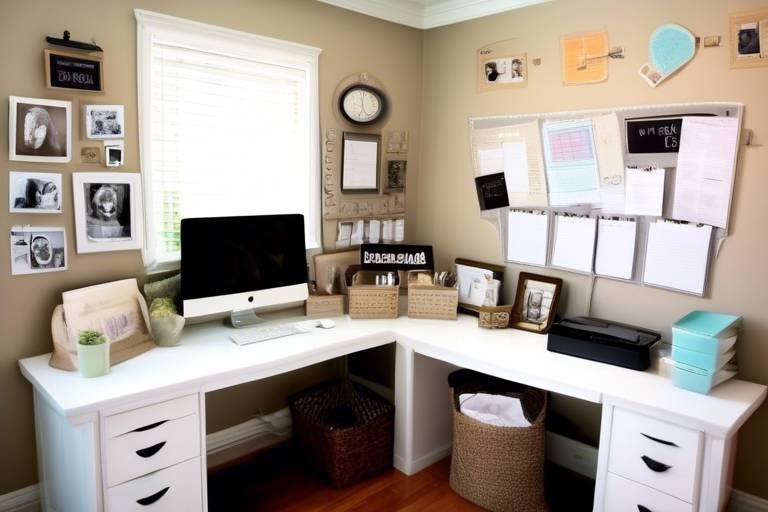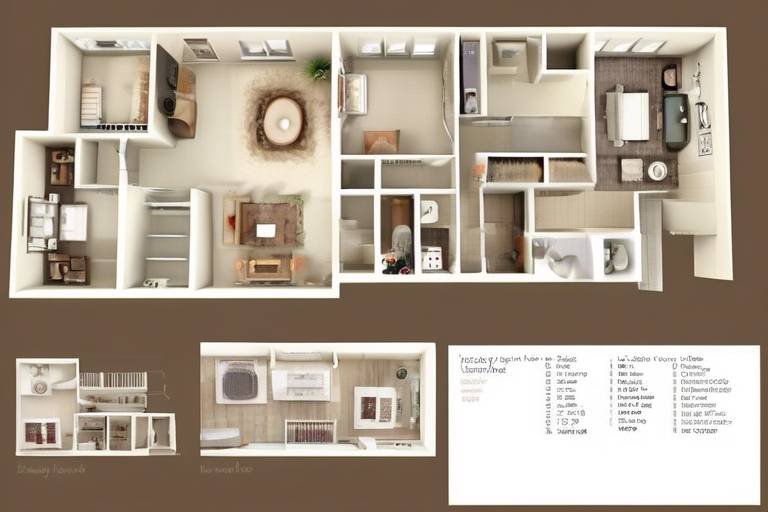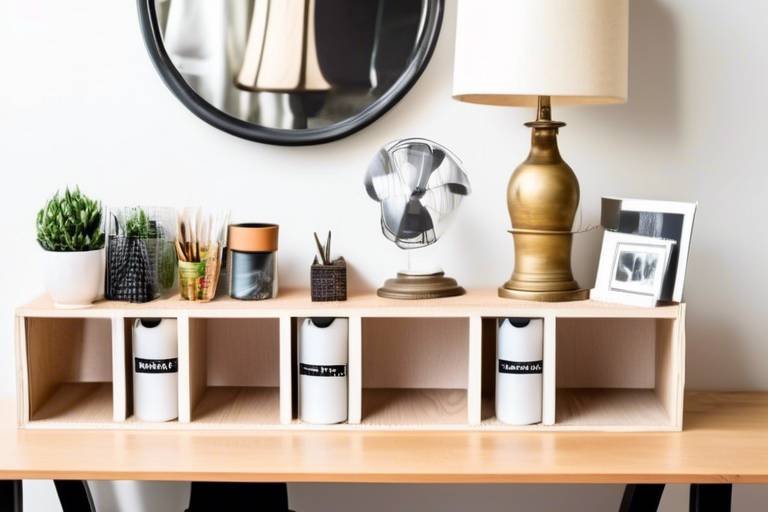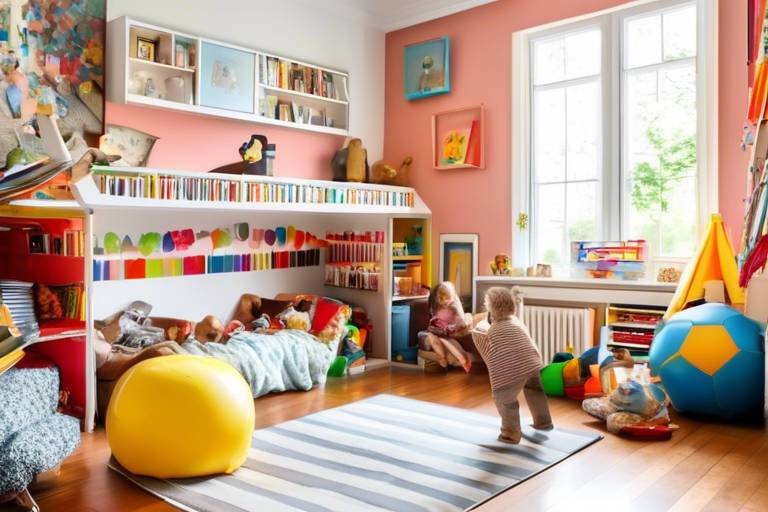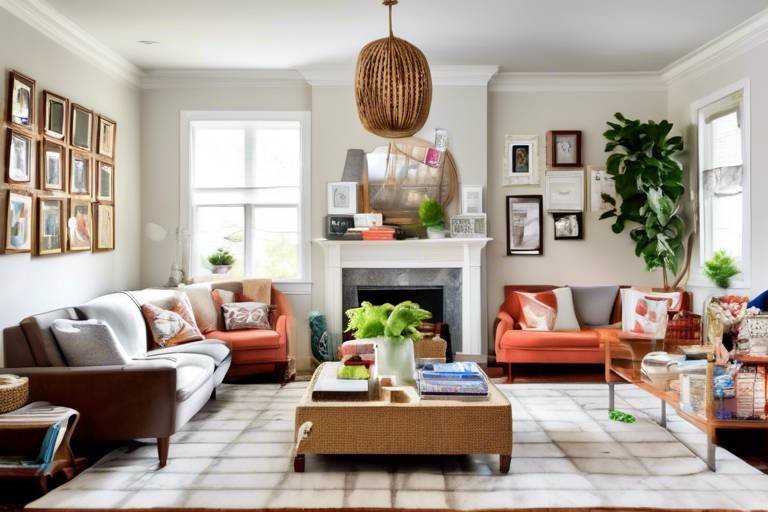Finding “Me Time” in a Busy Family Home
In the whirlwind of family life, it often feels like personal time is a luxury we simply can't afford. Between juggling work commitments, school runs, and the never-ending to-do lists, the concept of “me time” can seem like a distant dream. However, carving out moments for yourself is not just a nice-to-have; it's essential for your mental well-being and the overall health of your family dynamics. Think of it this way: if you’re running on empty, how can you be the best version of yourself for your loved ones? Just like a car needs fuel to run, we need personal time to recharge our batteries.
Finding “me time” is about more than just escaping the chaos; it’s about prioritizing self-care in a way that enriches your life and the lives of those around you. When you take time to relax and rejuvenate, you return to your family with renewed energy and a positive attitude. This not only benefits you but also creates a happier home environment. Imagine walking into your home after a peaceful hour spent alone, feeling like a superhero ready to tackle whatever comes next!
But how do you even begin to find that elusive “me time”? It starts with recognizing its importance and understanding that it’s not selfish to prioritize yourself. In fact, it’s a vital aspect of maintaining emotional health. Without it, you risk burnout, irritability, and even resentment towards your family. So, let’s dive into some effective strategies to help you reclaim your personal time amidst the beautiful chaos of family life.
Understanding the significance of personal time is vital for maintaining emotional health. This section discusses how “me time” contributes to overall well-being and family dynamics.
Recognizing what you truly need during your personal time is essential. This section helps readers assess their preferences and desires for relaxation and rejuvenation.
Engaging in self-reflection can clarify what activities bring joy and peace. This part offers practical methods for introspection to uncover personal interests.
Journaling serves as a powerful tool for self-discovery. Here, we explore techniques for effective journaling to identify your “me time” needs.
Incorporating mindfulness can enhance self-awareness. This section introduces simple mindfulness exercises to help you focus on personal needs.
Establishing clear boundaries is crucial for protecting personal time. This section provides strategies for communicating your needs to family members.
Designing a dedicated space for relaxation can enhance your “me time.” This section offers tips on how to create a soothing environment at home.
Selecting an appropriate area in your home can make a difference. This part discusses factors to consider when choosing your personal sanctuary.
The right decor can promote tranquility. Here, we provide ideas for creating a calming atmosphere that invites relaxation and self-care.
Q: How can I find time for myself when my family is always around?
A: Start by communicating your needs to your family. Set specific times for your “me time” and encourage them to respect that space. You can also look for small pockets of time throughout the day, such as early mornings or late evenings.
Q: What activities can I include in my “me time”?
A: Your “me time” can include anything that helps you relax and recharge. This could be reading a book, taking a long bath, practicing yoga, or even just enjoying a cup of tea in silence.
Q: Is it selfish to take time for myself?
A: Absolutely not! Taking time for yourself is vital for your mental health. When you care for yourself, you are better equipped to care for others.
Q: How do I create a personal sanctuary at home?
A: Choose a quiet space in your home that you can dedicate to relaxation. Decorate it with items that bring you joy and comfort, such as soft lighting, calming colors, and your favorite books or plants.

The Importance of “Me Time”
This article explores effective strategies for carving out personal time amidst the chaos of family life, helping individuals prioritize self-care and mental well-being.
In today's fast-paced world, the concept of “me time” often feels like a luxury we can't afford. However, it is essential for our emotional and mental well-being. Taking time for ourselves allows us to recharge, reflect, and reconnect with our inner selves. Imagine driving a car without ever stopping for gas—it would eventually run out of fuel and come to a halt. Similarly, without regular breaks for self-care, we risk burning out and becoming less effective in our roles, whether as parents, partners, or professionals.
When we prioritize “me time,”strong> we create a ripple effect that benefits not only ourselves but also our family dynamics. Here are some key reasons why carving out personal time is crucial:
- Enhanced Emotional Health: Regularly engaging in activities that bring you joy can significantly reduce stress and anxiety levels. It’s like a mental detox that clears away the clutter of daily responsibilities.
- Improved Relationships: When you take care of yourself, you show up as a better version of yourself for your loved ones. Think of it as polishing a diamond; the more you care for yourself, the more you shine in your relationships.
- Increased Productivity: Believe it or not, taking breaks can actually boost your productivity. It’s counterintuitive, but stepping away from your tasks allows your brain to reset and come back with renewed focus and creativity.
Moreover, understanding the significance of “me time” can lead to a healthier family environment. When parents take the time to nurture their own needs, they model self-care for their children, teaching them the importance of balance and personal well-being. This can create a culture within the home where everyone feels empowered to pursue their interests and passions, fostering a supportive atmosphere.
In summary, “me time” is not just a buzzword; it’s a vital component of a fulfilling life. By acknowledging its importance, we can better navigate the challenges of family life while maintaining our mental and emotional health. So, how do we make this happen? Let’s dive into the next section to explore how to identify our personal needs during this precious time.
Recognizing what you truly need during your personal time is essential. This section helps readers assess their preferences and desires for relaxation and rejuvenation.
Engaging in self-reflection can clarify what activities bring joy and peace. This part offers practical methods for introspection to uncover personal interests.
Journaling serves as a powerful tool for self-discovery. Here, we explore techniques for effective journaling to identify your “me time” needs.
Incorporating mindfulness can enhance self-awareness. This section introduces simple mindfulness exercises to help you focus on personal needs.
Establishing clear boundaries is crucial for protecting personal time. This section provides strategies for communicating your needs to family members.
Designing a dedicated space for relaxation can enhance your “me time.” This section offers tips on how to create a soothing environment at home.
Selecting an appropriate area in your home can make a difference. This part discusses factors to consider when choosing your personal sanctuary.
The right decor can promote tranquility. Here, we provide ideas for creating a calming atmosphere that invites relaxation and self-care.
Q: How much “me time” should I aim for each week?
A: Ideally, aim for at least a few hours each week. This can be broken down into smaller chunks of time that fit into your schedule.
Q: What activities count as “me time”?
A: “Me time” can include anything that helps you relax and recharge, such as reading, meditating, taking a bath, or even going for a walk.
Q: How can I communicate my need for “me time” to my family?
A: Be open and honest about your needs. Explain how taking time for yourself will help you be a better family member and encourage them to support you in this.

Identifying Your Needs
When it comes to carving out that precious “me time,” the first step is to truly understand what you need. It’s not just about finding a moment of peace; it’s about discovering what activities or practices will recharge your batteries and bring you joy. Think of it like tuning a musical instrument; if you don’t know what notes you need to hit, you’ll never produce a harmonious sound. Identifying your needs can be a game-changer in your quest for personal time amidst the chaos of family life.
So, how do you go about this self-discovery journey? Start by asking yourself some key questions. What activities make you feel alive? Is it diving into a good book, taking a long bath, or perhaps indulging in a hobby that you’ve put on the back burner? It’s essential to reflect on these aspects, as they can guide you toward the right kind of relaxation that resonates with your soul.
To help you pinpoint your personal preferences, consider engaging in some self-reflection techniques. One effective method is to keep a list of activities that make you feel happy and relaxed. You can categorize them based on energy levels:
| Low Energy | Medium Energy | High Energy |
|---|---|---|
| Reading a book | Going for a walk | Yoga or Pilates |
| Taking a bath | Gardening | Dance class |
| Meditation | Cooking a new recipe | Hiking |
By categorizing your activities, it becomes easier to choose what to do based on how you’re feeling on any given day. This method not only helps you identify your needs but also makes it simpler to prioritize them, ensuring that your “me time” is fulfilling and rejuvenating.
Another powerful tool in identifying your needs is mindfulness practices. When you take a moment to pause and breathe, you create space for your thoughts and feelings to surface. Try sitting quietly for a few minutes each day, focusing on your breath, and allowing your mind to wander. You might be surprised at what comes up! Perhaps you’ll realize that you’ve been craving creative expression or simply some quiet time to reflect on your day.
Ultimately, identifying your needs is about tuning into yourself and recognizing the signals your body and mind send you. It’s a journey of self-love and awareness that leads to a more balanced and fulfilling life. So, take the time to explore what truly resonates with you, and don’t hesitate to change it up as your needs evolve. Remember, your “me time” should be an evolving concept that adapts to your lifestyle and personal growth.

Self-Reflection Techniques
Self-reflection is like shining a flashlight into the dark corners of your mind. It helps you uncover hidden treasures—your true desires, needs, and aspirations that often get buried under the daily grind of family life. Engaging in self-reflection can be a game changer, allowing you to better understand what activities bring you joy and peace. So, how do you embark on this journey of introspection? Here are a few techniques that can guide you:
First, consider meditative practices. Taking just a few minutes each day to sit in silence and focus on your breath can open up a world of self-discovery. You might be surprised by the thoughts that arise! This quiet time allows you to tune into your inner voice, helping you to clarify what you truly need during your precious “me time.”
Another effective method is guided imagery. Picture yourself in a place where you feel completely at ease—maybe it’s a beach, a cozy cabin in the woods, or even your favorite coffee shop. By visualizing this serene environment, you can tap into feelings of relaxation and happiness. This technique not only helps you identify what makes you feel good but also serves as a mental escape whenever family chaos threatens to overwhelm you.
Additionally, creative expression can be a powerful tool for self-reflection. Whether it’s through painting, writing, or even cooking, engaging in creative activities allows you to express your feelings and thoughts in a tangible way. For instance, if you enjoy writing, consider keeping a journal where you can freely explore your emotions. This doesn’t have to be a daily task; even jotting down your thoughts once a week can provide clarity and insight into your needs.
Lastly, don’t underestimate the power of conversations with trusted friends or family members. Sometimes, discussing your feelings and thoughts with someone who understands can help you gain perspective. They might even reflect back insights that you hadn’t considered, guiding you toward what you truly want from your “me time.”
In summary, self-reflection techniques are essential for identifying your personal needs and desires. By incorporating practices like meditation, guided imagery, creative expression, and open conversations, you can create a clearer picture of what rejuvenates you. Remember, this journey is about discovering the little things that spark joy in your life. So, grab that metaphorical flashlight and start exploring!
- What is the best time to practice self-reflection?
Self-reflection can be practiced at any time, but many find it beneficial to do so in the morning or before bed when the mind is calm. - How long should I spend on self-reflection?
Even a few minutes a day can be effective. The key is consistency rather than duration. - Can self-reflection help improve my relationships?
Absolutely! Understanding your own needs can lead to better communication and healthier boundaries with loved ones.

Journaling for Clarity
Journaling is like having a heart-to-heart with yourself. It’s a sacred space where you can pour out your thoughts, feelings, and dreams without any judgment. Imagine sitting down with a warm cup of tea, pen in hand, and letting your mind wander freely onto the pages. This practice not only helps in organizing your thoughts but also acts as a mirror reflecting your innermost desires and needs. When life gets chaotic, and you feel overwhelmed by family responsibilities, journaling can serve as a beacon of clarity, guiding you back to what truly matters.
To get started, you don’t need a fancy journal or an elaborate setup. Just grab a notebook that speaks to you, and let your thoughts flow. You might start by writing about your day, but soon, you’ll find yourself diving deeper into what makes you tick. Ask yourself questions like, “What do I enjoy doing when I have time to myself?” or “What activities make me feel rejuvenated?” These questions can help you uncover the layers of your desires.
Furthermore, journaling can be a powerful tool for self-discovery. It allows you to track patterns in your thoughts and feelings over time. For instance, if you notice that you often write about feeling stressed, you can pinpoint what triggers those feelings. This awareness is the first step toward change. You might even consider setting aside a specific time each week to reflect on your entries. This can be a wonderful way to see how far you've come and what you still want to achieve.
Here are a few journaling techniques to enhance your clarity:
- Free Writing: Set a timer for 10 minutes and write without stopping. Don’t worry about grammar or punctuation; just let your thoughts flow.
- Gratitude Lists: Each day, jot down three things you’re grateful for. This practice shifts your focus from stress to positivity.
- Prompts: Use prompts like “Today, I felt…” or “I wish I could…” to guide your writing and spark deeper reflection.
Remember, the goal of journaling is not perfection but connection. It’s about understanding yourself better and carving out that precious “me time” you deserve. As you write, you may find that certain themes emerge, revealing what truly nourishes your soul. So, embrace this journey of self-exploration, and let your journal be a safe haven where your thoughts can roam free.
Q: How often should I journal?
A: There’s no set rule! Some people journal daily, while others prefer to do it weekly. Find a rhythm that feels right for you.
Q: What if I don’t know what to write about?
A: Start with simple prompts or write about your day. Over time, you’ll discover topics that resonate with you.
Q: Can journaling really help with stress?
A: Absolutely! Journaling can be a therapeutic outlet, helping you process emotions and gain perspective on stressful situations.

Mindfulness Practices
In the whirlwind of family life, finding moments of peace can feel like searching for a needle in a haystack. However, incorporating into your daily routine can transform these chaotic moments into opportunities for self-discovery and relaxation. Mindfulness is all about being present and fully engaged with the moment, allowing you to step back from the hustle and bustle and reconnect with yourself.
One effective way to practice mindfulness is through breath awareness. Simply take a few minutes each day to focus on your breathing. Find a quiet spot, close your eyes, and take a deep breath in through your nose, feeling your chest rise. Hold it for a moment, and then exhale slowly through your mouth. As you breathe, pay attention to how your body feels. This simple act can ground you and help clear your mind, making it easier to reflect on what you truly need during your “me time.”
Another powerful mindfulness technique is body scanning. This practice involves mentally scanning your body from head to toe, noticing any areas of tension or discomfort. Start at the top of your head and slowly work your way down, paying attention to how each part of your body feels. This not only fosters a deeper connection with yourself but also highlights areas where you might need to focus your self-care efforts. You might find that your shoulders are tense from stress or that your feet are aching from standing all day. Acknowledging these feelings is the first step toward addressing them.
To enhance your mindfulness journey, consider incorporating guided meditation into your routine. There are countless apps and online resources available that offer guided sessions tailored to different needs, such as stress relief, relaxation, or focus. These sessions can provide structure to your practice and help you stay committed to carving out that all-important “me time.” Whether you have five minutes or an hour, these meditations can help you center your thoughts and cultivate a sense of calm amidst the chaos.
Lastly, don't underestimate the power of mindful walking. This practice involves taking a leisurely stroll while paying attention to your surroundings, the sensation of your feet touching the ground, and the rhythm of your breath. It’s about immersing yourself in the experience of walking rather than rushing to your next destination. As you walk, notice the sounds around you, the colors of the leaves, or the feel of the breeze on your skin. This simple act can rejuvenate your spirit and provide a fresh perspective on your day.
Incorporating these mindfulness practices into your daily life can help you reclaim your “me time” and enhance your overall well-being. Remember, it’s not about finding large chunks of time but rather about making the most of the small moments. By practicing mindfulness, you’re not just creating space for relaxation; you’re also nurturing your mental health and strengthening your ability to cope with the demands of family life.
- What is mindfulness?
Mindfulness is the practice of being fully present and engaged in the moment, allowing you to observe your thoughts and feelings without judgment. - How can I practice mindfulness at home?
You can practice mindfulness at home through various techniques such as breath awareness, body scanning, guided meditation, and mindful walking. - How long should I practice mindfulness each day?
Even a few minutes a day can be beneficial. Start with 5-10 minutes and gradually increase as you become more comfortable with the practice. - Can mindfulness help with stress?
Yes, mindfulness can significantly reduce stress by promoting relaxation and helping you gain perspective on your thoughts and emotions.

Setting Boundaries
When it comes to carving out that precious “me time,” one of the most effective strategies is . Think of boundaries as the invisible walls that protect your personal space and time from the chaos of family life. It’s like having a personal fortress where you can retreat to recharge your batteries. But how do you effectively communicate these boundaries to your family without feeling guilty or selfish? It starts with understanding that your need for personal time isn’t just important for you; it’s beneficial for everyone in the household.
First, it’s essential to have a candid conversation with your family about your needs. You might be surprised by how supportive they can be when they understand that your “me time” contributes to a happier, more balanced home. Use “I” statements to express your feelings. For example, saying, “I feel overwhelmed and need some quiet time to recharge,” can be more effective than, “You all are too loud!” This approach not only conveys your message but also encourages empathy from your loved ones.
Next, consider establishing specific times that are dedicated solely to you. This could be early in the morning before the household wakes up, or maybe an hour after dinner when the kids are winding down. When you consistently carve out this time, it becomes a routine, making it easier for everyone to respect your boundaries. You might even want to create a visual reminder, like a calendar or a sign on your door, indicating your personal time. This not only signals to your family that you are unavailable but also reinforces your commitment to self-care.
It’s also important to remember that boundaries aren’t just about saying “no” to others; they’re about saying “yes” to yourself. This means being clear about what you will and won’t accept in terms of interruptions during your personal time. For instance, if you’ve decided that your “me time” is sacred, let your family know that during that hour, you won’t be answering calls or texts. Setting these expectations helps everyone understand the importance of respecting your space.
Finally, be prepared for some pushback. Change can be uncomfortable, and your family might not immediately understand or respect your boundaries. In these moments, it’s crucial to stay firm yet compassionate. Remind them gently why this time is essential for your well-being. You can even involve them in the process by encouraging them to set their own boundaries for personal time. This creates a culture of self-care within the family, where everyone can thrive.
In summary, setting boundaries is about creating a healthy balance between personal needs and family dynamics. By communicating openly, establishing routines, and being firm yet kind, you can protect your “me time” and, in turn, enhance the overall well-being of your family. Remember, it’s not selfish to prioritize yourself; it’s a necessary step in fostering a happy and healthy family environment.
- Why is setting boundaries important? Setting boundaries is crucial for maintaining your mental health and ensuring that you have time to recharge, which ultimately benefits the entire family.
- How can I communicate my boundaries effectively? Use “I” statements and express your needs clearly. It helps to explain how your personal time contributes to a happier home.
- What if my family doesn't respect my boundaries? Be patient and consistent. Remind them gently of the importance of your personal time and involve them in setting their own boundaries.

Creating a Personal Sanctuary
In the hustle and bustle of family life, carving out a little corner just for yourself can feel like finding a hidden treasure. Creating a personal sanctuary is essential for nurturing your soul and giving yourself the much-needed space to unwind and recharge. Imagine walking into a room that instantly calms your mind and lifts your spirits—this is what a personal sanctuary can do for you! It’s not just about having a physical space; it’s about cultivating an atmosphere that resonates with peace and tranquility. So, how do you go about crafting this serene escape?
First, you need to identify the perfect location within your home. Think about where you feel most at ease. Is it a cozy nook by the window, a spare room filled with natural light, or perhaps a corner of your bedroom? The right space can make all the difference. When selecting your sanctuary, consider factors such as:
- Light: Natural light can invigorate your spirit, so choose a space with ample sunlight.
- Noise Level: A quieter area will allow for better relaxation, away from the chaos of daily life.
- Comfort: Ensure the space is comfortable, inviting, and one where you can truly unwind.
Once you've chosen your spot, the next step is to decorate it in a way that promotes relaxation. Think of your sanctuary as a canvas where you can express your personal style while ensuring it remains a peaceful retreat. Incorporate elements that soothe your senses—soft colors, cozy blankets, and calming scents can all enhance the ambiance. You might want to add:
- Plants: Bringing nature indoors can create a refreshing and uplifting environment.
- Art: Hang artwork that inspires you or evokes a sense of calm.
- Lighting: Use soft lighting or candles to create a warm and inviting atmosphere.
Furthermore, consider adding personal touches that resonate with you. Maybe it’s a stack of your favorite books, a comfortable chair for reading, or even a small fountain to provide soothing sounds. The goal is to create a space that feels uniquely yours, where you can escape from the demands of family life and indulge in your favorite activities, whether that’s reading, meditating, or simply enjoying a cup of tea.
In essence, your personal sanctuary should be a reflection of your needs and desires. It’s a place where you can be unapologetically yourself, free from interruptions and distractions. Remember, this space is not just a luxury; it’s a necessity for your mental well-being. By prioritizing the creation of this sanctuary, you’re not only investing in yourself but also setting a positive example for your family about the importance of self-care.
Q: How can I maintain my personal sanctuary with a busy family life?
A: Maintaining your personal sanctuary amidst family life can be challenging, but it’s all about communication. Set clear boundaries with your family about your sanctuary time. Let them know when you need uninterrupted time to recharge, and involve them in the process of creating this space. They might even appreciate having their own sanctuaries!
Q: What if I don’t have a lot of space in my home?
A: Even in small spaces, you can create a personal sanctuary. Consider using a corner of your bedroom or living room, or even a cozy spot in the garden. The key is to make it feel special and separate from the everyday hustle.
Q: How often should I use my personal sanctuary?
A: The frequency of using your sanctuary depends on your personal needs. Aim for at least a few minutes each day, whether it’s in the morning to set a positive tone for the day or in the evening to unwind. Listen to your body and mind; they’ll guide you on when you need that time the most.

Choosing the Right Space
Choosing the right space for your “me time” is like picking the perfect pair of shoes; it needs to fit just right and feel comfortable. Think about it—when you have a cozy nook or a serene corner in your home, it can transform the way you unwind. The ideal space should resonate with your personal style and promote a sense of calm. So, how do you find that perfect spot amidst the hustle and bustle of family life?
First, consider the location. Is there a quiet corner in your living room, a sunny spot in the garden, or perhaps a spare room that you can convert into your sanctuary? The location should be away from the daily traffic of family activities, allowing you to escape into your own world. You might want to think about how often you’ll use this space. If you plan to retreat there daily, it should be easily accessible.
Next, think about the ambiance. The atmosphere of your chosen space plays a crucial role in how effectively you can relax. Here are some factors to consider:
- Lighting: Natural light can uplift your mood, while soft, warm lighting can create a cozy vibe.
- Noise Level: A quiet space is ideal, but if you can’t find one, consider soundproofing or using white noise machines.
- Comfort: Ensure that the furniture is comfortable, inviting you to sit back and unwind.
Another important aspect is personalization. This space should reflect who you are. Decorate it with items that make you smile—perhaps a few framed photos, your favorite books, or even some plants that bring a touch of nature indoors. The idea is to create an environment that feels uniquely yours, where you can escape and recharge. Think of it as your personal retreat, a place where you can indulge in activities that bring you joy, whether it's reading, meditating, or simply enjoying a cup of tea.
Lastly, don’t underestimate the functionality of the space. It should not only be aesthetically pleasing but also practical. Incorporate elements that facilitate your relaxation routine. For example, if you enjoy yoga, ensure there's enough room to stretch out comfortably. If reading is your escape, consider adding a small bookshelf or a side table to hold your favorite reads and a cup of tea. The more functional your space is, the more likely you are to use it regularly.
In summary, choosing the right space for your “me time” involves a blend of location, ambiance, personalization, and functionality. Take your time to explore different areas in your home and envision how each can serve as your personal sanctuary. After all, creating this space is a vital step toward prioritizing your self-care and mental well-being.
- What if I don’t have a quiet space in my home? Consider using noise-canceling headphones or creating a temporary space in a less-used room.
- How can I make my space feel more inviting? Use soft textiles, warm lighting, and personal decor to enhance the atmosphere.
- Is it necessary to have a separate room for “me time”? Not at all! A cozy corner or a favorite chair can work just as well.

Decorating for Relaxation
When it comes to creating a personal sanctuary, the way you decorate your space can significantly influence your ability to unwind and recharge. Think of your home as a canvas where every brushstroke can evoke a feeling, and every color can tell a story. To foster a sense of relaxation, consider incorporating elements that resonate with tranquility and peace. Start by choosing a color palette that soothes the soul; soft blues, gentle greens, and warm neutrals can create an inviting atmosphere that calms the mind and body.
Next, lighting plays a crucial role in setting the mood for relaxation. Natural light is a fantastic way to enhance your space, so if possible, position your sanctuary near a window. When the sun begins to set, consider using soft, warm lighting such as table lamps or fairy lights to create a cozy ambiance. If you’re feeling adventurous, you might even want to explore smart lighting options that allow you to adjust the brightness and color temperature to suit your mood.
Don't forget about the power of textures! Adding a variety of textures can make your space feel more inviting. Think plush cushions, soft throws, or a fluffy rug underfoot. These elements not only add comfort but also make the area visually appealing. Consider using items made from natural materials like wood, cotton, or linen, which can bring a touch of nature indoors and promote a sense of calm.
In addition to colors and textures, incorporating elements of nature can significantly enhance your relaxation space. Plants are a fantastic way to breathe life into your sanctuary. They not only purify the air but also create a serene atmosphere. Choose low-maintenance plants like succulents or snake plants if you’re worried about upkeep. You might also consider adding a small water feature, like a tabletop fountain, which can provide soothing sounds that help drown out the chaos of everyday life.
Finally, personal touches are essential in making your relaxation area feel uniquely yours. Hang artwork that inspires you, whether it’s calming landscapes or abstract pieces that evoke a sense of peace. You could also display photographs of cherished memories or quotes that resonate with your journey toward self-care. By surrounding yourself with items that hold meaning, you create a haven that not only promotes relaxation but also reflects your personality.
In summary, decorating for relaxation is about creating a space that feels like a retreat from the outside world. By carefully selecting colors, lighting, textures, and personal touches, you can transform any corner of your home into a sanctuary where you can truly unwind and recharge. Remember, this is your space—so let your creativity flow and design a haven that invites you to take that much-needed “me time.”
- What colors are best for a relaxation space? Soft blues, gentle greens, and warm neutrals are ideal as they promote calmness.
- How can I incorporate nature into my home? Use indoor plants, natural materials in decor, and even water features to bring a sense of nature indoors.
- What lighting options should I consider? Opt for natural light during the day and soft, warm lighting in the evening to create a cozy atmosphere.
- How do I personalize my relaxation space? Add artwork, photographs, and meaningful quotes that resonate with you to make the space uniquely yours.
Frequently Asked Questions
- Why is "me time" important for my mental health?
"Me time" is crucial because it allows you to recharge, reflect, and reconnect with yourself. Just like a phone needs to be charged to function, you need personal time to maintain your emotional well-being. It helps reduce stress, improves mood, and can even enhance your relationships with family by making you more present and engaged.
- How can I identify what I need during my "me time"?
Identifying your needs starts with self-reflection. Consider what activities make you feel relaxed and happy. You might try journaling or mindfulness practices to dig deeper into your feelings and desires. Ask yourself questions like, "What brings me joy?" or "What helps me unwind?" This introspection is key to finding your personal preferences for relaxation.
- What are some effective self-reflection techniques?
Some effective self-reflection techniques include journaling, meditation, and simply taking quiet time to think. Journaling can help clarify your thoughts and feelings, while mindfulness practices can enhance your self-awareness. You might also find it helpful to talk to a trusted friend or family member about your feelings, as sometimes an outside perspective can provide valuable insights.
- How do I set boundaries with my family to protect my "me time"?
Setting boundaries involves clear communication. Let your family know when you need personal time and why it's important for you. Be specific about your needs, whether it’s a certain time of day or a designated space. Remember, it's not just about saying "no" but also about expressing your needs positively. This helps others understand and respect your personal time.
- What are some tips for creating a personal sanctuary at home?
To create a personal sanctuary, start by choosing a quiet space in your home where you can relax without distractions. Decorate this area with calming colors, comfortable furniture, and items that bring you joy, like plants or art. Consider adding soft lighting and scents that promote relaxation, such as candles or essential oils, to enhance the atmosphere.
- How can I decorate my space to promote relaxation?
When decorating for relaxation, think about colors and textures that soothe you. Soft blues and greens, for example, can create a calm environment. Incorporate cozy textiles like blankets and cushions, and don’t forget about personal touches that make you smile. A few well-placed plants can also add a touch of nature, which is great for promoting a peaceful vibe.





